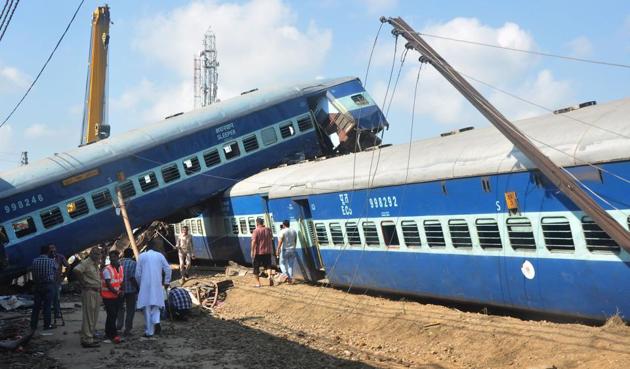Data on mishaps suggest railways’ track record has actually improved
In the past, when there were two sources to find the number of accident in railways, people often tried to match the two, failing to recognise there were definitional differences between them
The National Crime Records Bureau (NCRB) brings out an annual publication, Crime in India. In the past, this has also been used as source for figures on railway accidents. For example, in 2015, 26,066 people died because of railway accidents and 2,650 because of railway crossing accidents. Since 2016, NCRB no longer publishes figures on railway accidents. It only has numbers on crimes in railways. Therefore, the sole source for data on railway accidents is now Indian Railways (IR), such as Indian Railways, Year Book.

In the past, when there were two sources, people often tried to match the two, failing to recognise there were definitional differences between them. Let me give you a quote from the latest Year Book. “There were 103 consequential train accidents in 2016-17 as compared to 106 accidents during 2015-16.” This does not include Konkan Railway. Notice the qualifier. We think IR reports all accidents; but IR reports only “consequential accidents”, or “serious accidents”. What is a consequential accident? An accident is anything that adversely affects the engine, rolling stock, permanent way and works, fixed installations, communications, passengers or railway servants. We usually think of accidents from a passenger perspective. But there are other angles.
For purposes of reporting and analysis, IR actually classifies accidents under several heads — from A to R. For instance, A1 and A3 will be collisions of trains carrying passengers; A2 or A4 collisions of trains not carrying passengers; B represents fire or explosion in trains; C, trains running into road traffic and/or road traffic running into trains at level crossings; D, derailments; E, other train accidents; F, averted collisions; G, breach of block (a block is a segment of the track) rules; H, a train passing a signal at danger; J, equipment failures; K, failure of permanent way; L, failure of electrical equipment; M, failure of signalling and telecommunication; N, unusual incidents; P, casualties; Q, other incidents; and R, miscellaneous.
What’s the difference between an unusual incident and other incident? N would be wrecking or sabotage, not usually expected. Q6 would be something like “blockade to train services due to agitation”, not something that can be classified as an unusual incident. You can see why IR’s approach to accidents is different. L2 is “no tension in OHE (overhead equipment) for more than three minutes”. This may not fit with our usual perception of an accident, but the effect can be disastrous.
We are still left with the question. What is a consequential or serious accident? Certain threshold values are defined for loss to railway property and interruption to communications. A serious accident is one where there is a loss of life or grievous hurt to passengers, or those threshold values are exceeded, or where the Commissioner of Railway Safety (CRS) thinks an inquiry is needed. Data on railway accidents are also available through CRS. However, CRS doesn’t enquire into every railway accident and CRS data about accidents only include those where there has been a CRS inquiry.
That Year Book will also tell you IR attended to 982 accidents in 2016-17. How can this possibly match with 103? It doesn’t because 103 refers to those that are “consequential”. There are some exclusion clauses that must be noted too: “ (a) cases of trespassers run over and injured or killed through their own carelessness or of passengers injured or killed through their own carelessness; and (b) cases involving persons being Railways servant or holding valid passes/tickets or otherwise who are killed or grievously injured while travelling outside the rolling stock of a passenger train such as on foot board, roof or buffer but excluding the inside of vestibules between coaches or run over at a level crossing or elsewhere on the railway track by a train; and (c) level crossing accident where no passenger or railway employee is killed or grievously hurt unless the Chief Commissioner of Railway Safety or Commissioner of Railway Safety is of the opinion that the accident requires the holding of an inquiry by the Commissioner of Railway Safety.”
The exclusion clause makes it clear that a serious accident only includes instances where there is IR culpability. We might want to change this, but that’s the way it is today.
The next time you see a figure on railway accidents, bear these in mind. If you want to check IR’s track record, ask yourself what you are interested in. Fatalities and/or injuries on trains, or fatalities/injuries at level crossings? Collisions, derailments, fires? Whatever the yardstick, you will find (a) cross-country, IR doesn’t do that badly; (b) Over time, the performance has improved. Outside the Year Book, there are 2017-18 numbers and they tell the same story.
Bibek Debroy is chairman of Economic Advisory Council to the prime minister and a member of Niti Aayog
The views expressed are personal






